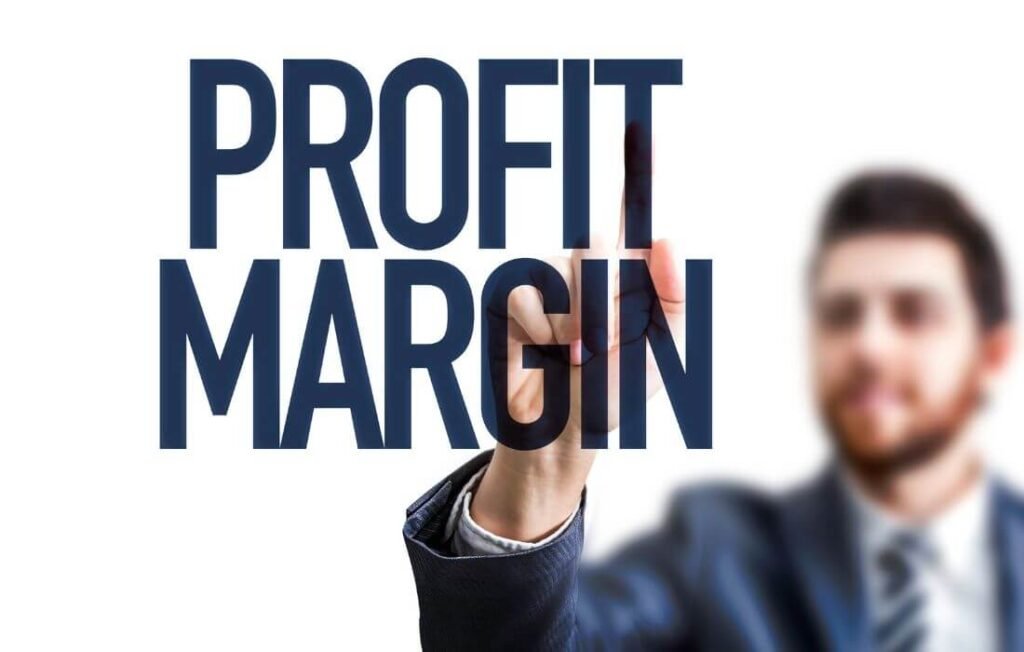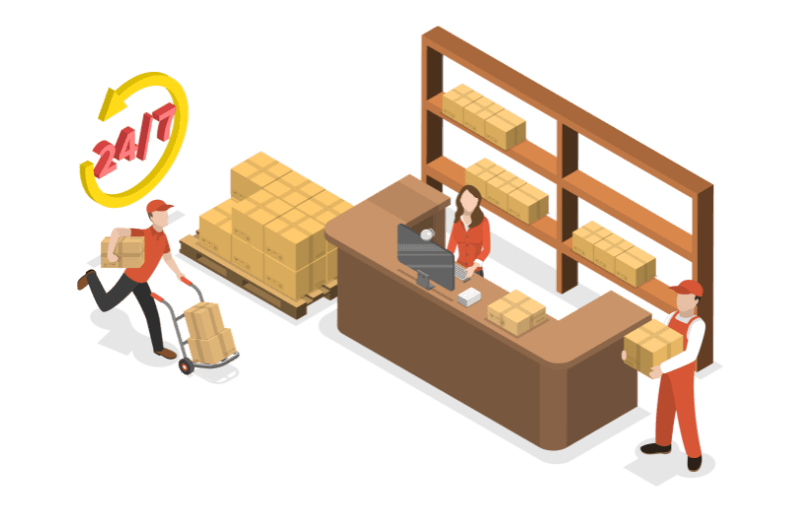In an age where online shopping has become the norm, you might find yourself asking: is dropshipping Worth it in 2024? The allure of starting an online store without holding inventory is enticing, yet the complexities bypassing traditional retail may leave you feeling overwhelmed.
As more entrepreneurs flock to this seemingly lucrative market, understanding the intricate landscape of dropshipping is essential—especially as competition surges and consumer expectations evolve. You need to know both the alluring benefits and the hard truths that could define your entrepreneurial journey.

This article delves into whether dropshipping is truly worth it in 2024, arming you with essential insights, realistic expectations, and actionable strategies to help you navigate this tricky terrain. Let’s uncover the truth behind this business model and ensure you’re well-prepared for what lies ahead.
What Is Dropshipping?
Dropshipping is an innovative retail model that has transformed the way entrepreneurs enter the world of eCommerce. It’s like being the crucial bridge that connects customers to their desires without the traditional hassles of inventory management. In this model, a store owner, or dropshipper, sells products online without actually stocking them. Here’s the magic: when you, as a dropshipper, receive an order from a potential customer, you simply forward it to your dropshipping supplier. These suppliers, often the unsung heroes, take up the torch by handling the stock, managing the fulfillment process, and ensuring the products journey safely from their warehouses to the customer’s doorstep.
The beauty of this model lies in its flexibility and low upfront costs. Unlike traditional retail models that require a significant investment in inventory, a dropshipping business can be initiated with minimal startup costs. This presents an attractive opportunity for those seeking to dip their toes into the entrepreneurial pool without the risks associated with high inventory costs.
However, the success of a dropshipping business hinges on choosing the best dropshipping suppliers. They must be reliable, capable of offering a range of products, and committed to maintaining high product quality. Moreover, these third-party suppliers must provide excellent customer service, as they play a crucial role in the customer experience.
Is Dropshipping Worth It?
Now let’s address the crux of the matter: is dropshipping worth pursuing? The answer isn’t just a simple ‘yes’ or ‘no’. Dropshipping can be a lucrative business venture, providing you with a doorway to participate in the thriving ecommerce platforms with relatively low risk. Yet, it would be best if you navigated it with your eyes wide open, acknowledging both the potential in profitability and the challenges that lie ahead.
Dropshipping offers tantalizing profit margins for those who know the intricacies of this business model and who can select the right products with market demand assessed through tools like Google Trends. The dropshipping market is vast, and with the correct marketing strategy, you can tap into a sea of potential customers looking for the products you offer in your dropshipping stores.
However, while the startup costs are low compared to other retail models, there are other costs to consider, such as marketing expenses, shipping costs, and potentially higher product prices from suppliers. These can eat into your profit margins if not managed well.

Shipping times are another critical factor. Since products are often shipped by third-party suppliers, possibly from overseas, prompt delivery can be challenging, which makes it imperative to set realistic expectations with your customers to maintain excellent customer service.
To ensure the prosperity of your dropshipping business, focus on finding a dropshipping platform or supplier that aligns with your niche and delivers reliability and speed. Cultivate a robust relationship with your dropshipping suppliers to ensure your fulfillment process runs smoothly, keeping your customers satisfied with their shopping experience.
In conclusion, dropshipping can certainly be “worth it” if you approach the venture with strategic planning, a clear understanding of the dropshipping business model, and a relentless dedication to providing a smooth customer experience. Success in the dropshipping industry is reserved for those who can adapt quickly, understand their customer’s needs, and strive for continuous improvement in every aspect of their online business.
Discover Premium Products and Suppliers
Explore a world of high-quality, fast-shipping products and reliable suppliers. Whether you’re just starting or looking to scale, Spocket offers the resources to make your store a success. Begin your free trial now and see the difference for yourself.
Benefits of Dropshipping
The allure of the dropshipping industry lies in its distinctive advantages, which have made it an attractive option for entrepreneurs looking to enter the e-commerce space. This business model simplifies the path to launching an online business by bypassing many of the challenges associated with traditional retail models. Let’s dive into the compelling reasons why dropshipping might just be the gold mine you’ve been searching for in the world of online commerce.
Low Startup Costs
Unlike brick-and-mortar shops or even traditional online stores, dropshipping requires a mere fraction of the upfront investment. Picture this: you’re starting a business without having to purchase bulk inventory or worry about storage costs. By partnering with dropshipping suppliers, your storefront becomes a gateway where you only order products as your customers demand them. The minimal overhead, often limited to setting up an e-commerce platform and a modest marketing budget, puts business ownership within your grasp, without the daunting startup costs.
| Expense | Traditional Model | Dropshipping Model |
|---|---|---|
| Inventory | High Cost | No Cost |
| Storage | High Cost | No Cost |
| Upfront Investment | Substantial | Minimal |
| Marketing | Variable | Variable (often lower) |
Low Risk
Imagine being able to test the business waters without the fear of sinking from heavy financial weights. That’s the beauty of dropshipping. With no inventory to purchase, the financial risks plummet dramatically. This gives you the freedom to experiment with types of products and pivot your offerings in response to market demands and trends identified through tools like Google Trends. E-commerce platforms under the dropshipping model allow you to explore your business’s potential without the looming threat of unsold stock or significant losses.
- Aspects Minimizing Risk:
- No bulk inventory purchases
- Easy to shift or expand product offerings
- Limited upfront investment
Fast, Flexible and Scalable
The dropshipping model operates at the speed of the internet—it’s quick to launch, adapt, and scale. You can have your dropshipping store up and running in no time, with access to a vast range of products from reliable suppliers around the globe. Flexibility is another cornerstone, providing you with the ability to tailor your product line to consumer demands without excess inventory risk. And when you’re ready to scale, the dropshipping model’s adaptability allows for growth without the need for additional resources like warehouses or shipping logistics.
| Capability | Benefit |
|---|---|
| Fast Setup | Go to market quickly with minimal barriers |
| Flexibility | Adjust offerings to market needs promptly |
| Scalability | Expand easily with increasing demand |
Embrace these benefits, and you may find dropshipping not just a viable option but a transformative one for starting or diversifying your online business.
Possible disadvantages of dropshipping
Dropshipping might seem like a golden ticket to entrepreneurial success, with its low upfront costs and simplified logistics, but before diving in, it’s crucial to consider the potential pitfalls. One of the primary drawbacks is dealing with thin profit margins. As you don’t hold inventory, you can’t take advantage of bulk purchasing, which often means you’re paying more per item compared to traditional retail models. This can pinch your profits, especially when you factor in the competitive pricing of the dropshipping market.
Moreover, the reliance on third-party suppliers can lead to issues outside your control. These include inventory shortages, shipping times, and product quality inconsistencies, all of which can reflect poorly on your customer service reputation. Speaking of shipping, if you’re working with multiple suppliers, your customers might receive their orders in several packages, possibly at different times, contributing to a less-than-ideal unboxing experience.
And let’s not forget the stiff competition. With relatively low barriers to entry, the dropshipping industry is crowded. Standing out requires a robust marketing strategy and possibly higher advertising budgets. Plus, the need for excellent customer service is paramount to retain customers in a retail space where loyalty is often fleeting.
In a nutshell, while dropshipping offers an accessible path to the ecommerce platforms, aspiring entrepreneurs must weigh these challenges against the model’s perceived ease and flexibility.
5 Hard Truths About Dropshipping
Venturing into the dropshipping world might stir up visions of easy ROI and a business that runs almost hands-off. But, there’s a raw reality lingering behind the scenes of a dropshipping business that needs to be understood. It’s not all about selecting the best dropshipping suppliers and watching the profits roll in. Let’s pull back the curtain and face these hard truths head-on.
1. Low profit margins.
When it comes to dropshipping, one of the most sobering facts is the razor-thin profit margins you may face. While you’re spared the hefty upfront costs typically associated with stocking inventory, the downside is that you miss out on bulk purchase discounts. Every cent matters in retail, and with the high competition in the dropshipping market, you might be squeezed to price products competitively, further diminishing your margins.

2. Highly competitive.
Picture this: A market swarming with entrepreneurs lured by the same attractive low startup costs that caught your eye. That’s the dropshipping industry. Navigating through this tightly packed space means you’ll be up against businesses offering similar products, fighting for the attention of potential customers. Surviving in this arena doesn’t just demand an exceptional marketing strategy, but also necessitates identifying a niche or offering unique value that sets you apart.
3. No control over the supply chain.
Being a dropshipper means putting a significant part of your business’s reputation in the hands of third-party suppliers. Here’s the kicker – you have zero control over their inventory levels, shipping times, or even handling of the fulfillment process. This detachment can result in stock shortages, long delivery periods, and inconsistent product quality, leaving you to manage customer disappointments and service issues, without any direct ability to rectify the underlying problems.
4. Legal liability issues.
Opting to dropship doesn’t absolve you from legal responsibilities. If a customer receives a faulty product, it’s your name on the line. And with the involvement of multiple entities in the dropshipping framework, pinpointing liability can become a murky territory. This potential risk underscores the necessity of partnering with reliable suppliers and having a solid grasp of your legal liabilities within the dropshipping business model.
5. Difficult to build a brand.
Finally, the pursuit of establishing a strong brand in a dropshipping business can be an uphill battle. When you’re selling products that countless other dropshipping stores are also marketing, differentiation becomes challenging. Without the ability to customize packaging or provide an array of products exclusive to your brand, your venture can seem more like another generic marketplace rather than a distinctive online brand that buyers recognize and trust.
The verdict? Dropshipping can indeed be a profitable business model, but it’s not without its challenges. A successful dropshipping business demands diligent market research, an effective marketing strategy, the selection of quality dropshipping products and suppliers, and a relentless focus on providing excellent customer service. Be ready to tackle these truths head-on, and dropshipping may just reward you with the success you’ve been aspiring to.
5 things to know before starting a dropshipping business
Entering the echelons of the dropshipping business can seem like a treasure trove of opportunities for aspiring entrepreneurs, beckoning with the allure of a low upfront investment and the promise of convenience. However, before you embark on deploying your virtual storefront into the world of ecommerce, there are crucial facets of the dropshipping paradigm you must consider. These insights serve as stepping stones on your path to a successful entrepreneurship venture. Here’s what you should keep firmly in view:
1. Dropshipping is highly competitive
Prepare to dive into an ocean teeming with rival swimmers, all vying for the attention of potential customers. The dropshipping market is brimming with contenders, each with a gleam of ambition similar to yours. Differentiating your dropshipping store from others requires a deft hand at marketing strategy, a keen eye for unique product offerings, and a brand voice that resonates with your audience. Picture this – you’re not just opening a store; you’re creating a brand experience that demands recognition in a crowded space. Harnessing tools like Google Trends to analyze the best dropshipping products and staying informed on the pulse of the online business landscape can be your compass in this competitive endeavor.
2. Like any business, dropshipping success takes time
Success is not an overnight story in the dropshipping world. It matures with time, persistence, and strategic refinement. Expecting immediate profit margins to skyrocket can lead to disappointment. Cultivate patience and constantly optimize your dropshipping business model. Infuse innovation into your marketing strategy and refine your approach based on customer feedback. Remember, longevity is a testament to success in the dropshipping industry, and it’s the persistent, not the fastest, who carves out the throne of victory.
3. Finding a reliable dropshipping supplier is key
Your supplier is the backbone of your business — the silent hero in the wings of your ecommerce platforms. The best dropshipping suppliers are those who are more than mere third-party suppliers; they are your partners in the fulfillment process. Reliability, product quality, and shipping times are the pillars upon which your reputation will rest. As a dropshipper, you need to ensure that you are working with suppliers who not only source a range of products but also understand the value of excellent customer service and timely delivery. Without them, your dropshipping platform is a castle built on sand – destined to crumble under the weight of the first wave.
Discover Premium Products and Suppliers
Explore a world of high-quality, fast-shipping products and reliable suppliers. Whether you’re just starting or looking to scale, Spocket offers the resources to make your store a success. Begin your free trial now and see the difference for yourself.
4. Dropshippers are responsible for customer support
Let’s face it: when shipping delays occur or issues arise, it’s your brand that’s on the line, not the invisible third-party supplier. It falls upon your shoulders to provide unparalleled customer service. Effective communication, swift problem resolution, and genuine empathy are your tools for fostering brand loyalty and repeat business. In the retail models of the digital age, where face-to-face interactions are absent, your customer support quality is the human touch that can bridge the gap between a one-time transaction and a long-term relationship.
5. Dropshipping is legal
Amidst a sea of misconceptions, stand clear on this: dropshipping is a legitimate business model. Granted, it’s wrapped up in legal and ethical guidelines that must be adhered to. This includes being transparent with your customers about shipping times, ensuring you have the right to sell the products you list, and always keeping abreast of ecommerce regulations. Treat your dropshipping store with the same professionalism and respect as any brick-and-mortar establishment, and the sails of legality will carry you far.
Each of these elements contributes to the intricate tapestry that is the dropshipping business. By understanding the competitive landscape, exuding patience, selecting the right suppliers, focusing on customer service, and adhering to legality, you’re charting a course for a potentially profitable business model. Embrace these truths, and you may find yourself not just riding the waves, but steering the ship of a successful dropshipping business into the horizon of your entrepreneurial dreams.
The Right Approaches to Dropshipping
Venturing into the dropshipping market can be a thrilling yet daunting journey. It’s crucial to align with the best dropshipping suppliers; these are the reliable partners who will ensure product quality, manage fulfillment processes, and contribute to excellent customer service. Customers expect a range of products to choose from, and dropshipping suppliers can provide that without the drawbacks of high startup costs.
For success in the dropshipping business model, it’s essential to keep a keen eye on profit margins. Competitive pricing is a balancing act involving shipping costs and the value provided to potential customers. Smart management of upfront investment and shipping times can set the foundation for a profitable business model.
Consider these key strategies:
- Conduct thorough research via Google Trends to identify profitable types of products.
- Choose ecommerce platforms that offer a seamless dropshipping platform, simplifying the integration with third-party suppliers.
- Develop a robust marketing strategy to target and retain customers, as a successful dropshipping business thrives on reeling in and keeping potential customers.
- Prioritize customer service; issues with orders must be dealt with promptly to cultivate trust and loyalty.
Understanding the dropshipping industry ensures you’re not just following trends, but rather, creating a sustainable online business with potential for growth.
How to Choose the Best Dropshipping Suppliers
Choosing the best dropshipping suppliers is crucial for launching a successful dropshipping business. Reliable suppliers provide the foundation for your venture, influencing product quality, shipping times, and ultimately, customer satisfaction.
Here are essential factors to consider when selecting your supplier:
| Factor | Why It’s Important |
|---|---|
| Product Quality | High-quality products lead to satisfied customers and fewer returns. |
| Shipping Times | Quick delivery keeps customers happy and encourages repeat business. |
| Profit Margins | Competitive pricing allows for healthy profit margins. |
| Supplier Reliability | Consistent and trustworthy suppliers prevent stock issues. |
| Range of Products | A broad selection caters to various customer demands. |
To streamline your search, consider these top dropshipping suppliers:
Spocket: Known for high-quality products and fast shipping. Dive into a vast range of products with great profit margins. Explore Spocket today
Autods: Offers an automated fulfillment process and stellar customer service. Join Autods for an efficient dropshipping experience. Get started with Autods for Free.
AppScenic: With AppScenic, gain access to premium products and reliable suppliers. Elevate your dropshipping game. Sign up with AppScenic.
Synee: Synee is the gateway to a plethora of stunning items and rapid delivery choices. Create your success story with Synee. Partner with Synee now.
Remember, the right supplier is the lifeline of your dropshipping store. Choose wisely!
Automate Your Dropshipping Success with AutoDS
Discover how easy dropshipping can be with AutoDS. Automate key tasks like product imports, inventory management, and order processing, so you can focus on scaling your store. Take advantage of AutoDS’s powerful features today.
How much money can you make when you start dropshipping?
Starting a dropshipping business can be tantalizing, promising a gateway to the e-commerce world without the need to manage inventory or large upfront costs. But the pivotal question is: How much money can you truly make?
The earning potential in dropshipping varies greatly, depending on several factors such as niche selection, the strength of your marketing strategy, and the relationship with reliable suppliers. Typically, profit margins from dropshipping range between 15-45%. However, when you factor in expenses like shipping costs, marketing expenses, and transaction fees, the net profit can narrow.
As a new entrant in the dropshipping market, you might find your initial earnings to be modest. With perseverance and astute business acumen, some dropshippers manage to earn upwards of $100,000 annually. But remember, this level of success doesn’t happen overnight. Many dropshippers may begin only making a few hundred dollars per month.
Bear in mind that dropshipping is no get-rich-quick scheme. It requires dedication, strategic planning, excellence in customer service, and a keen eye for trends in Google Trends and market demands. To carve out a slice of profit in the competitive dropshipping industry, prioritize finding the best dropshipping suppliers and engaging potential customers through a compelling marketing strategy.
Is Dropshipping Worth It: FAQs
Is Dropshipping Profitable? Absolutely. Dropshipping can be a profitable business model with the right approach to marketing strategy, selection of the best dropshipping suppliers, and maintenance of excellent customer service. Profit margins, however, are influenced by product types, competition, and the efficacy of your marketing.
What are the Startup Costs? One of the compelling perks of dropshipping is its low upfront costs. Unlike traditional retail models, there’s no need to hold inventory, significantly reducing startup costs. However, investment in a dropshipping platform and initial marketing efforts is essential.
How Easy is it to Find Reliable Suppliers? While it requires some research, finding reliable dropshipping suppliers is manageable. Use resources like Google Trends and dropshipping supplier directories to identify suppliers that match your niche and promise product quality.
Are There Any Ongoing Costs or Fees? Yes, there are fees associated with running a dropshipping business. These can include ecommerce platform fees, transaction fees, and potentially higher shipping costs, all of which should be factored into pricing.
Can I Offer a Range of Products? Dropshipping stores can offer an extensive range of products. Without the need for physical inventory space, you can cater to the desires of potential customers across various niches.
How Long Will it Take to Be Successful? Success timelines in the dropshipping industry vary widely. A successful dropshipping business requires patience, a sound marketing strategy, and an ongoing commitment to adapting and improving your online business.
Bottom Line
Deciding whether dropshipping is worth pursuing involves weighing multiple facets of this ecommerce model. When considering the best dropshipping suppliers or reliable suppliers, remember that their role is pivotal in maintaining product quality and ensuring timely deliveries—both crucial for excellent customer service. Efficiently managing the dropshipping suppliers can also affect your profit margins.
Starting a dropshipping business means relatively low startup costs since there’s no need for a significant upfront investment in inventory. Nonetheless, dropshipping stores must account for sometimes unpredictable shipping costs and longer shipping times with Third-Party Suppliers, both of which can influence customer satisfaction and retention.
The dropshipping industry offers a range of products to choose from, but success hinges on selecting the right types of products, as advised by tools like Google Trends, and crafting an effective marketing strategy. Potential customers will not find you without effort; therefore, investments in marketing are as important as the selection of reliable suppliers.
Moreover, choosing a solid dropshipping platform and a dropshipping model can make or break your business. A successful dropshipping business is not just about selling; it’s about creating a brand that excels in customer service and stands out in a crowded dropshipping market.
In essence, dropshipping can be a profitable business model, especially for those willing to commit to continuous market research, strategic planning, and fostering genuine customer relationships. However, it’s not a get-rich-quick scheme and requires dedication like any other online business.




